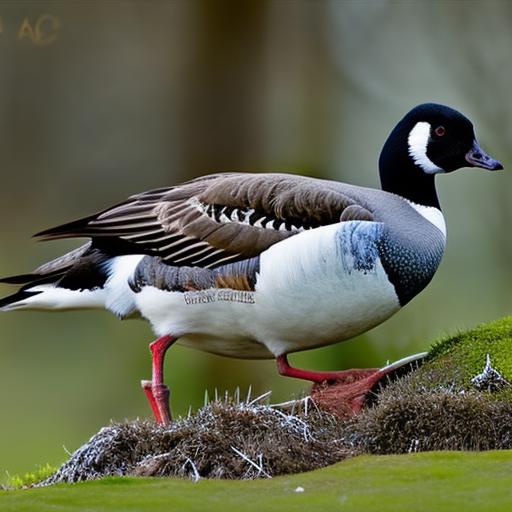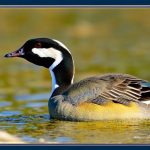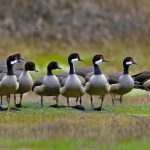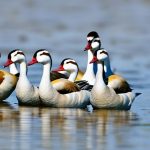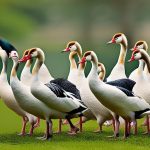Canadian Geese, also known as Canada Geese, are a species of waterfowl that are native to North America. They are known for their distinctive black head and neck, white patches on their face, and brownish-gray body. Canadian Geese are known for their V-shaped flying formation and their loud honking calls. These birds are highly adaptable and can be found in a variety of habitats, including lakes, rivers, marshes, and grasslands. They are also known for their strong migratory instincts, traveling long distances between their breeding and wintering grounds.
The Migration of Canadian Geese to the UK
In recent years, Canadian Geese have been observed migrating to the United Kingdom in increasing numbers. The reasons for this migration are not entirely clear, but it is believed that changes in climate and habitat loss in their traditional breeding grounds may be contributing factors. The UK provides a suitable environment for Canadian Geese, with its abundance of wetlands, lakes, and grasslands. The geese are known to arrive in the UK in the late autumn and can be found in various locations across the country, including nature reserves, parks, and coastal areas. Their presence has sparked both fascination and concern among conservationists and the public alike.
Selecting the Perfect Breeding Ground
When Canadian Geese arrive in the UK, they begin the process of selecting the perfect breeding ground. They are known to be highly territorial and will defend their chosen nesting site from other geese and potential predators. The geese prefer nesting near water, such as lakes, ponds, or rivers, where they can find food and protection for their young. They also look for areas with plenty of vegetation for cover and nesting material. Once a suitable site is found, the geese will begin the process of courtship and pairing.
Courtship and Pairing
Courtship and pairing among Canadian Geese is a fascinating and intricate process. It begins with the males performing elaborate displays to attract the attention of the females. These displays can include honking, head bobbing, and wing flapping. Once a female is interested, the pair will engage in a series of bonding behaviors, such as preening each other’s feathers and swimming together. Once the pair bond is established, the geese will begin the process of building their nest and preparing for egg-laying.
Nesting and Egg-Laying
Canadian Geese are known for their large, bulky nests, which are typically constructed from grasses, reeds, and other vegetation. The female will lay a clutch of eggs, usually between 4 and 8, and will incubate them for several weeks. During this time, the male will stand guard and protect the nesting site from potential threats. The female will only leave the nest briefly to feed, relying on the male to bring her food. Once the eggs are laid, the incubation period begins.
Incubation Period
The incubation period for Canadian Geese eggs typically lasts around 25-30 days. During this time, the female will diligently tend to the eggs, keeping them warm and protected from the elements. The male will continue to stand guard and defend the nesting site, ensuring the safety of the eggs and the female. The geese are known to be highly vigilant during this time, and will aggressively defend their nest from any potential threats, including other geese, predators, and humans.
Hatching and Raising Goslings
After the eggs have been incubated, they will begin to hatch, usually within a 24-hour period. The goslings are born with their eyes open and are covered in down feathers. They are able to walk and swim shortly after hatching, and the parents will lead them to water to begin feeding. The goslings will stay close to their parents for protection and guidance, and will be taught how to forage for food and navigate their environment. The parents will continue to care for and protect their young until they are old enough to fend for themselves.
Challenges and Threats During Breeding Season
Breeding season can be a challenging time for Canadian Geese, as they face a number of threats and obstacles. Predation is a major concern, with eggs and goslings being vulnerable to predators such as foxes, raccoons, and birds of prey. Human disturbance is also a significant threat, as nesting sites can be disrupted by recreational activities, construction, and other human-related disturbances. In addition, habitat loss and degradation can impact the availability of suitable breeding grounds for the geese. Conservation efforts are crucial in addressing these challenges and ensuring the survival of Canadian Geese in the UK.
The Role of Canadian Geese in the Ecosystem
Canadian Geese play a vital role in the ecosystem, particularly in their breeding grounds. They help to control vegetation growth by grazing on grasses and aquatic plants, which can benefit other wildlife species. Their droppings also contribute nutrients to the soil, which can enhance the fertility of the surrounding habitat. In addition, the geese serve as a food source for predators and scavengers, helping to maintain the balance of the food chain. Their presence also provides opportunities for wildlife enthusiasts and nature lovers to observe and appreciate these magnificent birds in their natural habitat.
Conservation and Management of Canadian Geese in the UK
Conservation and management of Canadian Geese in the UK is a complex and multifaceted endeavor. Efforts are focused on protecting and preserving their breeding grounds, as well as addressing potential threats and conflicts with humans. This includes implementing measures to reduce human disturbance at nesting sites, managing populations to prevent overgrazing and habitat degradation, and conducting research to better understand the behavior and ecology of the geese. Conservation organizations and government agencies work together to develop and implement strategies for the sustainable management of Canadian Geese, ensuring that they continue to thrive in the UK for generations to come.
Meet Walter, the feathered-friend fanatic of Florida! Nestled in the sunshine state, Walter struts through life with his feathered companions, clucking his way to happiness. With a coop that’s fancier than a five-star hotel, he’s the Don Juan of the chicken world. When he’s not teaching his hens to do the cha-cha, you’ll find him in a heated debate with his prized rooster, Sir Clucks-a-Lot. Walter’s poultry passion is no yolk; he’s the sunny-side-up guy you never knew you needed in your flock of friends!

